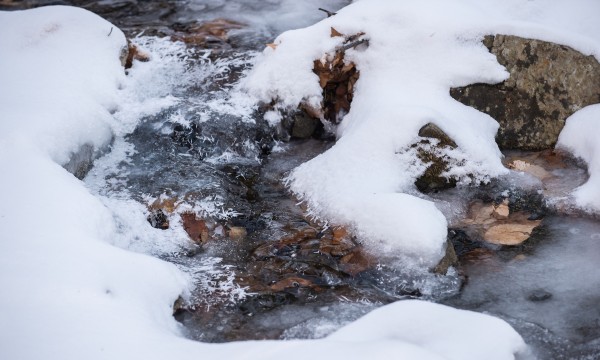We have seen a big change in the last month as spring has arrived, and the snow has largely disappeared from the Reserve. This is an important time of year, as much of the water that was stored as snow becomes mobile and makes it into the ground, rivers, and lakes.
If you were to ask a first-year geography student how all that snow melts, they would probably answer, “when the air temperature is above zero, the snow melts”. They would be partly correct, and the process of air temperature transferring energy to the snow is referred to as the “sensible heat flux”. But air temperature is only part of the story, and several other energy sources can result in snow melt.
How does snow melt?
Intuitively, we know that snow melt is driven by more than just temperature. Perhaps you’ve noticed icicles melting on a sunny day even though the temperature is well below freezing, or you’ve observed how snow melts around the base of trees and edges of buildings more quickly than in the open forest. These phenomena represent melt driven by shortwave radiation (energy from the sun) and longwave radiation (energy from objects with temperatures above absolute zero, -273.15 C). Rain can also be a major source of energy (a process referred to as advection).
The advection of energy to snow during rain events can be particularly important in flood generation, as runoff from rainfall and the resulting snowmelt flows into the rivers and streams. Many of the major flooding events in Canada have resulted from “rain on snow” events.
Finally, energy can also be transferred to the snow by the conduction of energy. An example of this process is when you hold a snowball in your hand. Heat energy is conducted from your hand to the snowball. Similarly, energy can be conducted through the ground surface to the snowpack.
While many of these processes may sound similar, how they are measured and the math used to describe them are different. Scientists, including those conducting research at the Reserve, make great efforts to understand and measure each energy component essential not only for snow melt, but for other processes such as evaporation and plant growth. Scientists refer to all the sources and sinks of energy as the “surface energy budget.” Scientists expect climate change to affect some components of the energy budget more than others. Understanding the energy budget is critical to understanding the potential impacts of climate change on things like flooding and droughts.
Greg Langston
Geoscience Research Technician
Department of Earth and Planetary Sciences, McGill University
This article was originally published on April 20th, 2021.
Header: (Photo: Alex Tran)

